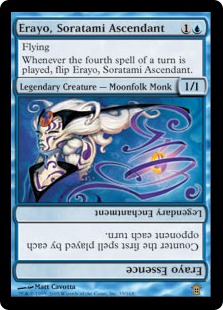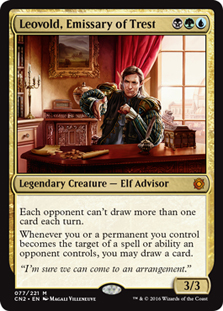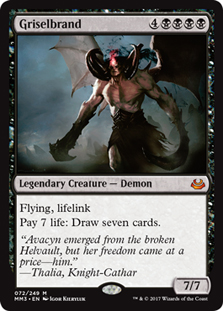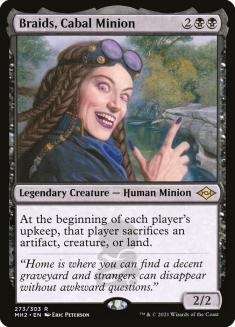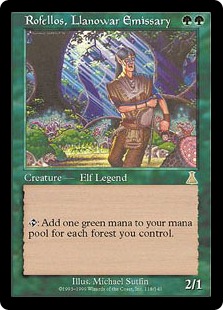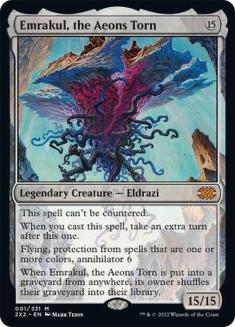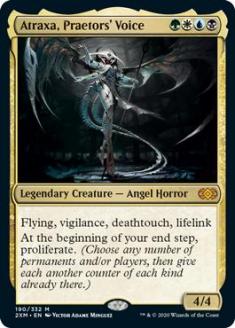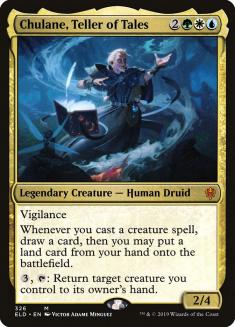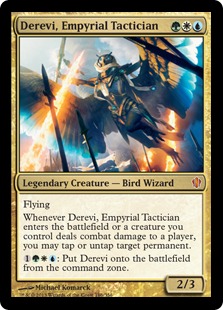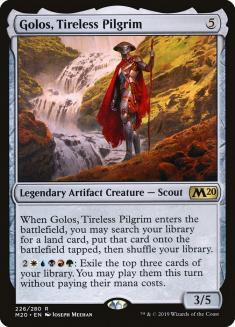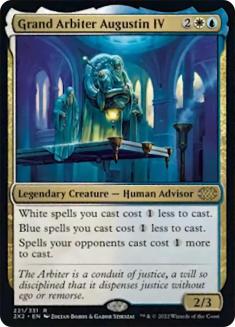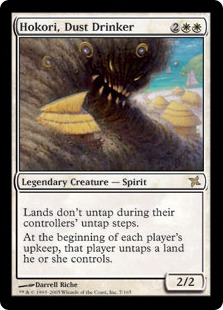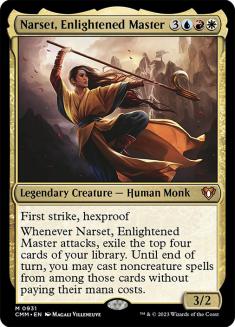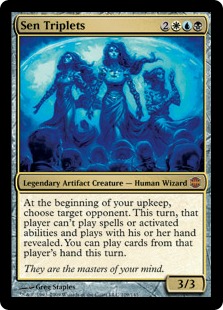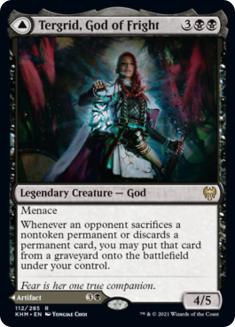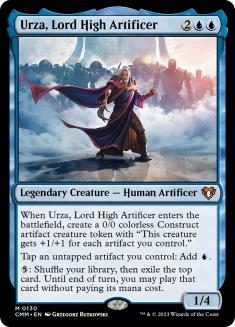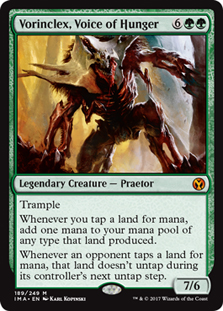Bringing back Banned as a Commander (BaaC) is a suggestion that crops up from time to time on social media. It’s a conversation worth exploring, if for no other reason than the fact that the question is constantly recurring.
First, I’ll address the biggest misconception. We on the Commander Rules Committee (RC) don’t think that the concept is too difficult for players to handle. Magic players are smart. They can definitely process the additional list and the arguments behind its existence and which cards might go on it. The reason we removed the category isn’t its complexity, but in the necessity. The major part is that you don’t make format-level rules for corner cases — in this one, we were doing it for three or four cards. One of the things we on the RC value is simplicity, especially when it comes to communication. A single banned list is crisp, clean, and straightforward to communicate. It’s not the highly invested player that we’re targeting here, but the legion of the more casually invested. In this thing, we’re serving as their voice.
There’s a valid argument that we should be crafting the format for the more highly invested player. After all, as the argument goes, they’re the ones on whom our decisions have the most impact. They’re the ones (pre- and post-COVID) going to events at their LGS or Grands Prix and CommandFests to play the format. The kitchen table players are just going to do whatever they want anyway. That argument, however, belies the truth of the format’s popularity.
One of the reasons that we’ve become monumentally successful is that we’ve catered to the vast group of players who until we came along didn’t have a voice. The idea that someone was looking out for them truly resonated, as we’ve focused on what matters to that group: stability, simplicity, and de-emphasis on competition. That stance — and not wavering from it despite immense pressure to do so — has translated into Commander becoming the most popular format in Magic. Leaning towards the most highly invested segment of the player base would then be abandoning what got us here in the first place. It would attempt to make Commander into the same as other formats, which is the one thing we absolutely don’t want to do. This format will continue to exist on its own terms.
Accepting that we don’t want to try to make Commander just like other formats, we can still break down the argument of whether or not bringing back BaaC is a good idea. One of the major drivers of this conversation is what happens if the number of commanders that would go on the BaaC list makes no longer a corner case? What if there are a dozen or more offenders? Would that make it time to resurrect the category? Let’s continue along the line that it might be.
A significant part of the Philosophy Document is this sentence:
In short, it means we want to do our best to prevent as many miserable games as possible. What miserable means is highly subjective, but we have a pretty good idea of where the biggest chunk of common ground lies. For the most part, it means taking the game away from the other players. We understand that games have to end, but the most negative experiences come from players feeling like they haven’t ever gotten started. This isn’t vilifying resource-denial strategies or those who play them; it’s recognition that our target demographic enjoys a particular openness to their games.
We can also look at the types of things that will get cards banned. Again, from the Philosophy Document, this includes cards which easily or excessively:
- Cause severe resource imbalances
- Allow players to win out of nowhere
- Prevent players from contributing to the game in a meaningful way.
- Cause other players to feel they must play certain cards, even though they are also problematic.
- Are very difficult for other players to interact with, especially if doing so requires dedicated, narrow responses when deck-building.
- Interact poorly with the multiplayer nature of the format or the specific rules of Commander.
- Lead to repetitive game play
Operating under that guidance, we can come up with a list of candidates for BaaC.
Before we get there, I’ll address what is a common misconception from supporters of the pro-BaaC argument. Part of the draw of the idea is that it would free up some cards to be playable in the 99. In the end, the move would shackle more cards than it frees. The poster children represented here are Braids, Cabal Minion; Erayo, Soratami Ascendant; Griselbrand; Leovold, Emissary of Trest; and Rofellos, Llanowar Emissary. Emrakul, the Aeons Torn might also fit.
Of those, I’d without a doubt keep Erayo and Leovold banned, and likely Griselbrand. The first two are an easy case — they without a doubt and without much work prevent players from contributing to the game. Erayo is especially heinous because once flipped, with generally trivial effort, it locks out others for free. One wheel with Leovold simply takes the other players out of the game. Griselbrand is a better Yawgmoth’s Bargain, getting you the cards right away and proving the answer to getting more.
The others can likely be freed. The worst sin of Braids is when it’s easily available out of the command zone on Turn 2, basically ending the game before it gets started. With the added necessity of having to tutor for it to get it early, it seems safe. Rofellos is borderline, although it doesn’t seem much worse than Metalworker. Emrakul is the most borderline. Outside the command zone, it can’t be Entombed and Reanimated, so it seems reasonably safe, but with easy access to it in the command zone, it could be problematic.
What new cards would then go on the BaaC list? We’d first have to answer why they’d go on the list despite not currently being banned. The easy answer is that they’re fine (at least mostly so) in the 99, but they’re undesirable coming out of the command zone. The reason that we’d pick them although we haven’t done so already is that we’ve taken a more liberal view of banning cards, which is the whole reason we’ve reintroduced the category in the first place.
Looking back at the Philosophy Document, we can glean a few answers, although it feels like we might need to stretch in some places. This list would combine two factors: crafting the format more towards the kinds of games we’d like to encourage and identifying cards that are actively creating a negative environment. While we lean strongly towards the latter currently, having the aforementioned more liberal bent in adding banned cards suggests that the former can carry nearly equal weight.
For the purposes of this list, we’ll lean a bit away from our current idea of banning cards as exemplars, although they can certainly still serve that function. I’ll first make the argument for why each of these cards (many of them with relatively high salt scores on EDHRec) would go on the list before addressing the counterarguments.
The combination of keyword soup in an inexpensive package and the ability to easy create oppressive Superfriends deck would warrant Atraxa, Praetors’ Voice’s inclusion on the list. Having four colors in the casting cost isn’t all that much of a restriction because one of those colors happens to be green, allowing for easy ramp and color-fixing.
Maybe the least offensive card on the list, Chulane offers excessive rewards at no cost for doing what you’re going to do a lot of anyway, namely cast creatures. Its major sin is leading to incredibly repetitive play. It might also lead to a compelling argument that Tatyova, Benthic Druid might also belong here, but that seems like way too much of a stretch.
If we’re actively discouraging deck styles that take away the game from other players, then Derevi merits inclusion for its easy ability to break the symmetry of Stax cards like Winter Orb. Funny that circumventing the commander tax isn’t its top problem. It didn’t just push the envelope, it shredded it. There is simply too much going on for such an inexpensive card.
Golos does serve as an exemplar, but this one for designers, who are making five-color commanders that don’t cost five colors to cast — a trend that can quit at any time. The problem is that players get the advantage of choosing from any card in Magic while not having to pay the associated cost for the flexibility. Ubiquity is also an anti-Golos argument. According to EDHRec, it’s the most popular commander, in greater than 20% more decks than the number two choice, Atraxa. This is the kind of fatigue the format doesn’t need.
Another card that simply takes away the game from other players, Grand Arbiter Augustin IV’s compounding factor is that it also accelerates its controller. We actually don’t mind slowing down Commander games if it’s symmetrical. GAAIV is anything but. It’s the first card that I knew I was going to add to the list.
Continuing on the same theme, being able to build around Hokori, Dust Drinker and guarantee it coming out of the command zone stops the other players from being in the game unless someone happens to have an answer in hand on that critical turn. By the time they get untapped enough to cast something, Hokori’s controller is likely to be too far ahead to catch up to.
Narset suffers a little from the Paradox Engine problem. It’s mostly oppressive but it doesn’t always work, forcing players to suffer watching it maybe happen. The build for Narset is to add all or most of the extra turn spells, which basically leads to one player hogging the action while three watch. That’s not a particularly enjoyable game for 75% of the players and it’s certainly not the kind that we want to encourage.
For the most part, players don’t mind when you copy their stuff, but stealing it is a horse of a different color. Sen Triplets robs a player of any agency while you’re stealing their stuff, which is what leads to its high Salt Score — even slightly higher than Narset.
Braids free in the 99 is only a small one of the anti-Tergrid, God of Fright arguments. Tergrid might be okay if it had only one of the two abilities (either sacrifice or discard) instead of both — although the discard part plus Mindslicer is still pretty icky. No matter what, it would still lead to a style of deck that doesn’t much suit fun and interactive play. It’s a card that definitely fine in the 99 but is a monster coming out of the command zone.
Although we lean more towards the more subjective fun angle, Urza, Lord High Artificer is one that could go based on power level. The issue is that it’s frightfully easy to build an overpowered deck with to win on very early turns. Faster Commander games are not better Commander games. Sure, you can just shuffle up and go to the next one, but why bother if it’s just going to be the same all over again, which is what Urza brings from the command zone.
In the same vein as GAAIV, Vorinclex, Voice of Hunger speeds you up while slowing everyone else down. In mono-green, it’s frightfully easy to get it going Turn 3 or Turn 4, making the game pretty one-sided rather quickly.
Other commanders that I considered for the list were Korvold, Fae-Cursed King and Jin-Gitaxias, Core Augur, although in the end, neither seemed oppressive enough. As I mentioned, Emrakul is the most borderline, since it’s not difficult to cast it by Turn 6, it can’t be countered, and the extra turn is a cast trigger. If I were leaning towards being the most safe, I’d probably add it to the list instead of waiting to see if it caused too much havoc. I’m sure there are a few others that folks would nominate as potential candidates, but the list isn’t all that large.
All those arguments made, I’m going to upend them. As it stands right now, bringing back BaaC still isn’t worth the effort. It might (stress on the “might”) lead to a healthier environment in the long term, but the short-term pains would be extreme.
While we could do without a few of the cards, many of those that would go on the list are some of the most popular commanders in the game. Folks have invested significant time and resources into their decks. That alone isn’t a reason to keep around unhealthy cards, but it’s certainly a consideration. The only compelling reason to reinstate BaaC is if there would be enough cards to make the extra layer of administration worthwhile, so paring down the list doesn’t make sense. If the cards are that oppressive, outright banning is enough.
Additionally, even though there are some styles which we feel are on the whole could be unhealthy in high enough doses, we want to support the diversity in play styles that has become the hallmark of the format. Everyone being able to find their particular niche is one of the things that Commander is all about.
Visit my Decklist Database to see my Signature Decks, the Chromatic Project, and more!


